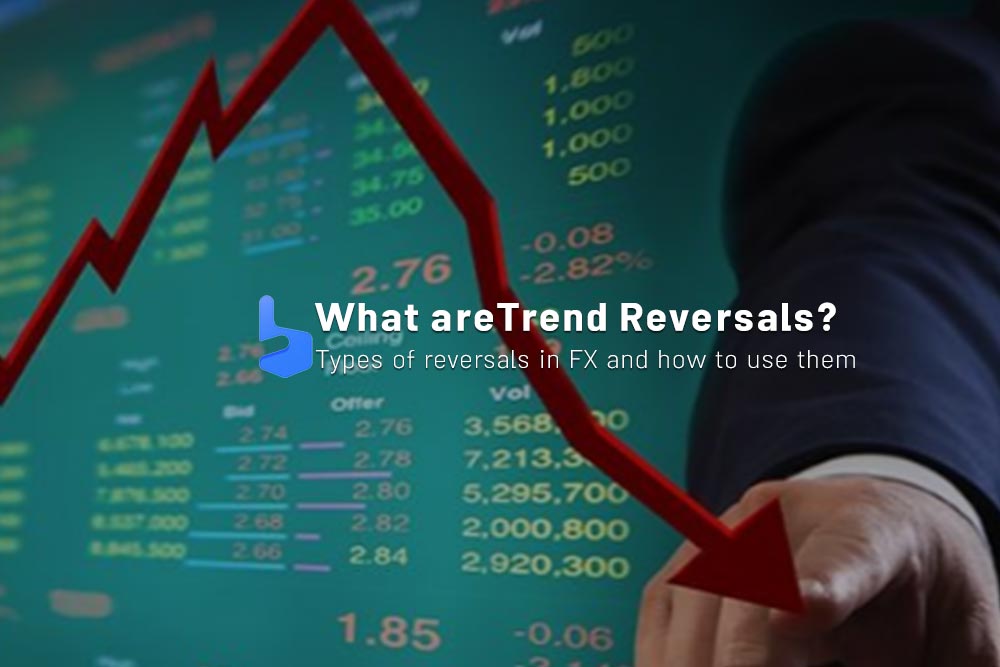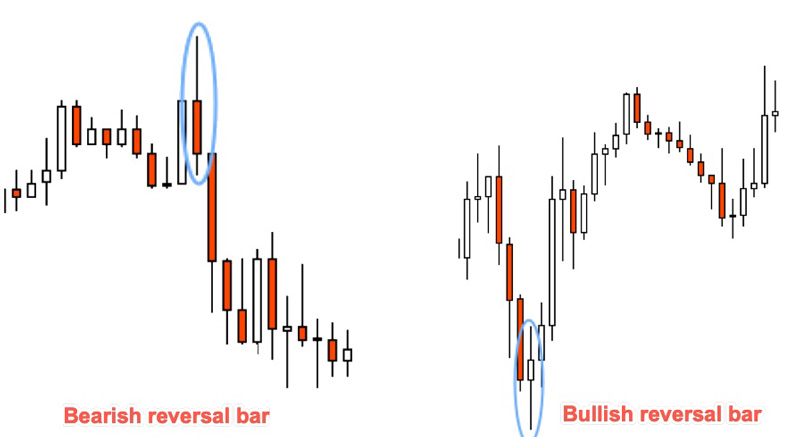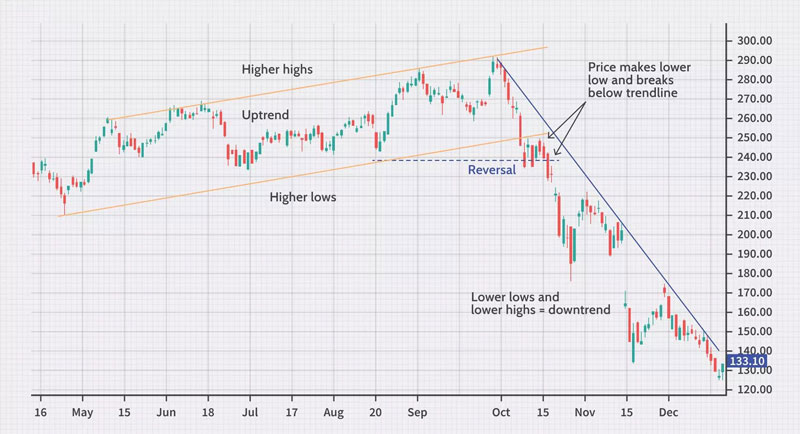What you are about to read:
In the world of Forex Learning, the ability to identify and invest in trend reversals is a skill that sets successful traders apart from others. They occur when there is a significant change in the dominant direction of price movement for a currency pair. This change can present profitable opportunities for traders who can accurately predict and act based on these changes.
In this article from Brokerland, we will delve deeper into the concept of what a trend reversal is, its types, and the tools that traders use to identify and leverage them.
What is a Trend Reversal?
A trend reversal, in the context of trading and technical analysis, refers to a significant change in the dominant direction of price movement for a financial asset. It occurs when the consistent pattern of price behavior, whether upward, downward, or sideways, changes its course.
It indicates a shift from one market sentiment to another, potentially offering trading opportunities for those who can accurately identify and act based on these changes.
Key Features
Below, we examine the key features of these changes:
Change in Price Patterns: Reversals are characterized by a change in the pattern of price highs and lows. For a one from an uptrend, the pattern shifts from higher highs and lower lows to lower highs and lower lows. For a from a downtrend, the pattern changes from lower highs and lower lows to higher highs and higher lows.
Forex Indicators: Various forex indicators such as moving averages, oscillators (e.g., Relative Strength Index – RSI), and volume indicators can provide signals of a potential trend reversal. These indicators assist traders in identifying changes in price momentum and overbought or oversold conditions.
Candlestick Patterns: Specific patterns like engulfing patterns, harmonic patterns, Doji, shooting stars, and other patterns can serve as primary indicators of trend reversals. These patterns reflect changes in market sentiments and provide insights into potential changes.
Volume Analysis: Changes in trading volume can offer additional confirmation of changes in market sentiments. Increased volume often accompanies significant changes in forex trend.
Support and Resistance Levels: Breaking key support or resistance levels can be an indication of a potential trend reversal. Breaking below support in an uptrend or above resistance in a downtrend may signal a change in market dynamics.
Divergence: Divergence in Forex occurs when the price trend and an indicator move in opposite directions. This can be a sign of weakening movement and a potential reversal.
Market Context: Factors such as the release of economic data, geopolitical events, and central bank decisions can influence market sentiments and play a role in this case.
Confirmation: It is important to look for multiple signals that align with each other. A single signal may not be sufficient for making trading decisions, so confirmation from multiple indicators or patterns strengthens the validity of a signal.
They are crucial moments in trading as they indicate changes in market sentiments that can lead to significant price changes. However, accurately predicting them can be challenging, and false signals are possible. Traders should employ a combination of technical and fundamental analysis, risk management strategies, and a risk-reward ratio to effectively navigate the complexities of reversals.
Types of Reversals
Now lets introduce two types of them, which are fundamental concepts.
Bearish
A bearish reversal signifies a significant change in the direction of the price of a financial asset, usually a currency pair in Forex trading. It occurs when an existing uptrend changes its course and starts moving in a downward direction. It indicates that market sentiments are transitioning from bullish (moving upwards) to bearish (moving downwards).
Bearish types are important concepts in trading as they present trading opportunities for investors to capitalize on potential future downtrends. Early detection of it can help traders make informed decisions to enter short positions or close long trades and potentially benefit from an impending price decline.
Bullish
A bullish reversal signifies a significant change in the direction of the price of a financial asset, often a currency pair in Forex trading. It occurs when a prevailing downtrend changes its direction and begins moving in an upward direction. In simpler terms, a bullish one indicates that market sentiments are shifting from bearish (moving downwards) to bullish (moving upwards).
Bullish ones are crucial in trading as they present potential trading opportunities for profiting from future uptrends. Early detection of this change can assist traders in making informed decisions to enter long positions or exit short trades and potentially benefit from an impending price increase.
It’s important to remember that while bullish and bearish trend reversals can provide profitable trading opportunities, they are not always accurate, and the risk of false signals exists. Traders should use a combination of technical analysis tools, fundamental analysis, risk management strategies, and a risk-reward ratio to effectively navigate the complexities of reversal signals.
An Example of Trend Reversal in Trading
In the chart below, we see a depiction of an uptrend moving within a channel, creating higher highs and higher lows. The price initially breaks out of the channel and reaches below the trendline, indicating a potential change. The price then continues to the lower end and below the previous channel low, confirming the likelihood of a reversal to the downside.
Subsequently, the price continues to move lower, forming lower highs and lower lows. As long as the price does not reach higher highs and lows above the previous channel, a return to the bullish trend will not occur. However, a move above the trendline can be an initial warning sign of a potential reversal.
The example, with reference to an ascending channel, highlights the mindset of trend analysis and reversals. Several times within the channel, the price reaches lower lows compared to the previous oscillation, yet the overall upward trend remains intact.
Summary
In the forex market, with abundant profit opportunities, there are many different ways to earn income, from using AI in forex or price action trading to personal preferences like prop trading or utilizing financial astrology for forex trading. Whatever method or approach we choose, there are fundamental principles that form the basis of this market, and knowing them is essential for everyone.
Examples include trend reversals, which we discussed in this article, explaining that it refers to a change in the dominant direction of the market, which may occur due to news, changes in market sentiments, and other factors in either an upward or downward trend.
Timely recognition of these changes and utilizing them can enhance the profits of traders in any time and strategy. However, remember that no strategy is foolproof, and there is always risk in trading. These signals are not guarantees of success; they are probabilities that guide your decisions. Continuous practice, disciplined execution, and logical thinking are key elements of successful trading strategies, including those involving reversals.











